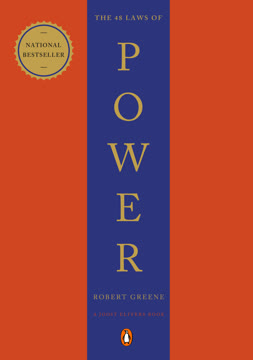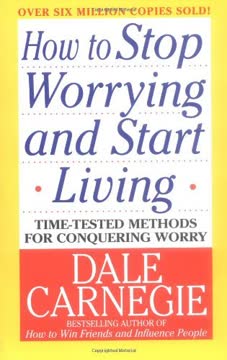Key Takeaways
1. Your decisions shape your destiny
Dreams of destiny: We all have dreams... We all want to believe deep down in our souls that we have a special gift, that we can make a difference, that we can touch others in a special way, and that we can make the world a better place.
The power of decision. Every moment, we make decisions that shape our lives. These decisions, whether conscious or unconscious, determine our thoughts, feelings, and actions. They are the ultimate power we have to control our destinies. By taking control of our decisions, we can instantly change our lives.
Three crucial decisions. In every moment, we make three decisions that control our destiny:
- What to focus on
- What things mean
- What to do
By consciously making these decisions, we can direct our lives towards our goals and dreams. It's not our conditions, but our decisions that determine our fate.
2. Pain and pleasure are the ultimate motivators
Whatever you link pain to, you'll avoid, and whatever you link pleasure to, you'll move toward.
Driving forces. Pain and pleasure are the fundamental forces that drive all human behavior. We are constantly moving away from perceived pain and toward perceived pleasure. Understanding this principle is crucial for creating lasting change in our lives and the lives of others.
Leverage for change. To create change, we must:
- Associate massive pain to not changing
- Associate massive pleasure to making the change
By consciously manipulating these associations, we can motivate ourselves and others to take action and make lasting changes. This understanding is key to personal growth, leadership, and influencing others.
3. Change your focus to change your life
Whatever we focus on becomes our idea of reality.
The power of focus. What we focus on directly impacts our emotional state and the actions we take. By changing our focus, we can instantly change how we feel and what we do. This power of focus is one of the most important tools we have for shaping our lives.
Asking empowering questions. One of the most effective ways to change our focus is by asking better questions. Instead of asking disempowering questions like "Why me?", we can ask empowering questions like "How can I use this?" or "What's great about this?". These questions direct our focus and lead to more resourceful states and actions.
Key strategies for changing focus:
- Use empowering questions
- Look for the positive in every situation
- Focus on solutions rather than problems
- Direct attention to what you can control
4. Harness the power of state and physiology
Emotion is created by motion.
Mind-body connection. Our physical state directly influences our emotional state and vice versa. By changing our physiology – our posture, breathing, facial expressions, and movements – we can instantly change how we feel and perform.
State management techniques:
- Change your posture: Stand tall and confident
- Control your breathing: Deep, rhythmic breaths for calmness
- Use power moves: Fist pumps, victorious gestures
- Smile and laugh: Even if forced, it can change your mood
- Exercise: Regular physical activity improves overall state
By consciously managing our physiology, we can consistently access resourceful emotional states, leading to better decisions and actions.
5. Master your emotions through understanding and reframing
You are the source of all your emotions; you are the one who creates them.
Emotional mastery. Understanding and controlling our emotions is crucial for a fulfilling life. Emotions are not something that happen to us, but something we create through our interpretations and focus. By mastering our emotions, we gain control over our lives.
Reframing technique. To change our emotions, we can reframe our experiences by:
- Recognizing the signal (emotion)
- Appreciating/acknowledging it
- Getting curious about its message
- Reinterpreting its meaning
- Taking new action based on the reframe
This process allows us to transform potentially limiting emotions into empowering ones, using them as catalysts for positive change rather than sources of suffering.
6. Create empowering beliefs and rules
If you develop the absolute sense of certainty that powerful beliefs provide, then you can get yourself to accomplish virtually anything, including those things that other people are certain are impossible.
Belief systems. Our beliefs shape our reality by influencing our perceptions, decisions, and actions. By consciously choosing empowering beliefs, we can expand our possibilities and achieve more.
Rules for happiness. We all have unconscious rules that determine when we feel certain emotions. By becoming aware of these rules and consciously changing them, we can make it easier to feel good and harder to feel bad.
Steps to create empowering beliefs and rules:
- Identify current limiting beliefs and rules
- Question their validity and usefulness
- Create new, empowering beliefs and rules
- Find evidence to support the new beliefs
- Act as if the new beliefs are true
- Consistently reinforce the new beliefs through thoughts and actions
7. Develop a compelling identity to drive lasting change
The strongest force in the human personality is the need to remain consistent with how we define ourselves.
Identity as a driving force. Our identity – who we believe we are – is the most powerful force shaping our behavior. We will consistently act in alignment with our identity, even if it means sabotaging our conscious goals.
Transforming identity. To create lasting change, we must often shift our identity. This involves:
- Deciding who we want to become
- Taking immediate action aligned with the new identity
- Proving to ourselves that this is who we truly are
By consciously shaping our identity, we can create automatic, consistent behaviors that lead to our desired outcomes. This approach is more powerful and sustainable than relying on willpower or temporary motivation.
Last updated:
FAQ
1. What is "Re-Awaken the Giant Within" by Anthony Robbins about?
- Personal transformation guide: The book is a comprehensive guide to taking control of your emotions, beliefs, values, and actions to create lasting change and achieve personal excellence.
- Mastering five key areas: Robbins focuses on emotional, physical, relationship, financial, and time mastery as the pillars for a fulfilling life.
- Action-oriented strategies: The book provides practical exercises, challenges, and step-by-step methods to help readers implement change immediately.
- Empowerment philosophy: Robbins emphasizes that everyone has a "sleeping giant" within, capable of greatness, and the book is designed to awaken that potential.
2. Why should I read "Re-Awaken the Giant Within" by Anthony Robbins?
- Proven impact: The book has influenced millions, including high achievers like Serena Williams and Bill Clinton, with its actionable advice and motivational approach.
- Practical tools: It offers concrete strategies for overcoming limiting beliefs, setting empowering standards, and creating lasting behavioral change.
- Universal relevance: Robbins addresses challenges faced by people from all walks of life, making the content applicable whether you seek personal, professional, or relational growth.
- Inspirational stories: The book is filled with real-life examples and testimonials that illustrate the effectiveness of Robbins’ methods.
3. What are the key takeaways from "Re-Awaken the Giant Within" by Anthony Robbins?
- Change starts with decisions: Your destiny is shaped by the decisions you make, not your circumstances.
- Three steps to lasting change: Robbins outlines raising your standards, changing your limiting beliefs, and adopting effective strategies as the foundation for transformation.
- Master your emotions: Emotional mastery is crucial, as emotions drive behavior and outcomes.
- Values and rules matter: Understanding and consciously designing your values and rules is essential for fulfillment and happiness.
4. What is the "concentration of power" principle in "Re-Awaken the Giant Within" by Anthony Robbins?
- Focused energy yields results: Concentrating all your resources on mastering a single area can produce extraordinary results quickly.
- Avoiding dabbling: Most people fail because they spread their efforts too thin and never master anything significant.
- Controlled focus as a tool: Like a laser, focused attention can cut through obstacles and accelerate progress.
- Foundation for success: This principle underpins Robbins’ approach to personal and professional achievement.
5. How does Anthony Robbins define and use "belief systems" in "Re-Awaken the Giant Within"?
- Beliefs shape destiny: Robbins asserts that beliefs are powerful commands to the nervous system, dictating what is possible or impossible.
- Creation and destruction: Beliefs can empower or limit you, and changing them is central to personal breakthroughs.
- Conditioning beliefs: To change a belief, associate massive pain with the old belief and pleasure with the new, empowering one.
- Global vs. specific beliefs: Robbins distinguishes between beliefs about specific situations and global beliefs (e.g., about life, people, or oneself), with the latter having the greatest impact.
6. What are the "three master principles of quality change" in "Re-Awaken the Giant Within" by Anthony Robbins?
- Raise your standards: Decide what you will no longer tolerate and what you aspire to become.
- Change your limiting beliefs: Develop certainty that you can meet your new standards, or you’ll sabotage yourself.
- Change your strategy: Find role models, learn their methods, and adapt their strategies to achieve your goals efficiently.
7. How does "Re-Awaken the Giant Within" by Anthony Robbins explain the role of pain and pleasure in shaping behavior?
- Pain and pleasure as motivators: All human behavior is driven by the desire to avoid pain and gain pleasure.
- Neuro-associations: Our nervous system links certain behaviors or emotions to pain or pleasure, often unconsciously.
- Rewiring associations: Lasting change requires linking pain to old, unwanted behaviors and pleasure to new, desired ones.
- Examples and stories: Robbins uses stories (e.g., his aversion to beer) to illustrate how these associations are formed and can be changed.
8. What is the "Science of Neuro-Associative Conditioning (NAC)" in "Re-Awaken the Giant Within" by Anthony Robbins?
- Conditioning for change: NAC is a step-by-step process to condition your nervous system to associate pleasure with desired behaviors and pain with those to avoid.
- Six-step system: Robbins introduces a specific syntax for using any change technique, ensuring changes are lasting and not just temporary.
- Responsibility for change: Emphasizes that you must believe change is possible, necessary, and that you are the one who must make it happen.
- Beyond willpower: NAC provides a framework for change that goes deeper than willpower, focusing on emotional and neurological conditioning.
9. How does "Re-Awaken the Giant Within" by Anthony Robbins address the importance of values and rules?
- Values as a compass: Your values guide every decision and ultimately shape your destiny.
- Means vs. ends values: Robbins distinguishes between means values (e.g., money, family) and ends values (e.g., love, security), urging readers to focus on the latter for fulfillment.
- Rules determine feelings: The rules you set for when your values are met dictate how often you feel happy, successful, or loved.
- Redesigning rules: Robbins encourages making rules that are achievable, within your control, and provide many ways to feel good and few ways to feel bad.
10. What is the significance of "identity" in "Re-Awaken the Giant Within" by Anthony Robbins?
- Identity shapes behavior: Your beliefs about who you are set the boundaries for what you will or won’t do.
- Consistency drive: People act in ways that are consistent with their identity, even if it’s limiting or destructive.
- Identity can change: Robbins shows that identity is not fixed; it’s shaped by decisions and can be expanded or transformed for greater success.
- Practical exercises: The book includes exercises to help readers redefine and expand their identity for lasting change.
11. What are the "Ten Emotions of Power" in "Re-Awaken the Giant Within" by Anthony Robbins, and why are they important?
- Positive emotional states: The ten emotions are love and warmth, appreciation and gratitude, curiosity, excitement and passion, determination, flexibility, confidence, cheerfulness, vitality, and contribution.
- Antidotes to negativity: Cultivating these emotions helps counteract negative states and leads to a more fulfilling life.
- Foundation for action: These emotions drive positive behavior, resilience, and the ability to handle challenges.
- Daily practice: Robbins encourages readers to consciously nurture these emotions to create a life of joy and impact.
12. What are the most actionable exercises and challenges in "Re-Awaken the Giant Within" by Anthony Robbins?
- Ten-Day Mental Challenge: Commit to avoiding unresourceful thoughts and emotions for ten consecutive days, focusing only on solutions and positive states.
- Values and rules exercises: Identify and reorder your values, then create empowering rules that make it easy to feel good and hard to feel bad.
- Identity exploration: Use guided questions and journaling to define and expand your sense of self.
- Relationship and time mastery: Apply specific exercises to improve communication, deepen connections, and prioritize what’s truly important over what’s merely urgent.
- Contribution challenge: Take action to give back to your community, reinforcing the principle that "the secret to living is giving."
Review Summary
Re-Awaken the Giant Within by Tony Robbins offers practical strategies for personal growth and success. Readers praise its insights on emotional mastery, goal-setting, and changing habits. Many find the book inspiring and life-changing, appreciating Robbins' passion and sincerity. Some criticize the repetitive content and marketing focus. The condensed version is seen as more accessible than the original. While some question the universal applicability of the methods, most readers find valuable tools for self-improvement and achieving their goals.
Similar Books










Download PDF
Download EPUB
.epub digital book format is ideal for reading ebooks on phones, tablets, and e-readers.








